The new landscape for petrol retailers gives independents a better chance for growth.
David Burton.
Ware now well past the date when Coles and Woolworths provided voluntary undertaking to the Australian Competition and Consumer Competition to cease heavy discounting of petrol via the use of shopper docket deals.
These discounts are now limited to 4¢ per litre from supermarket purchases. The retailers can top up the discounts, but the extra deals must be funded from their convenience operations.
So, this has had an impact for both businesses at a time when a sustained period of lower petrol prices also has an impact on dollar turnover of fuel. Shops sales became increasingly important during the past 12 months.
Woolworths grows non-fuel categories
Petrol sales for the full year F15 reached $5.6 billion, a decline of more than 20 per cent on the prior 12 months in dollars. The decline in volume over the same period was less, at 13 per cent. Woolworths says that the decline is primarily due to changes to the Woolworths-Caltex alliance and declining average fuel selling prices.
However, Woolworths’ petrol division did manage to extricate growth in non-fuel categories, with total merchandise sales for the year increasing 9.3 per cent or 6.2 per cent for same-store sales.
Woolworths’ full-year results announcement for the year ended June 2015 noted that the gross margin for food, liquor and petrol as a unit increased by 51 basis points (bps) due to a change in the sales mix away from petrol to higher-margin food and liquor (F&L) operations. When measured separately, the F&L gross margin declined 53 bps.
Coles Express records slight decline in petrol volume
Coles Express recorded revenue of $7.4 billion for the year, 9.2 per cent lower than the previous corresponding period due to lower volumes and fuel prices.
Total fuel volumes for the year declined 1.3 per cent and comparable volumes were down 3.7 per cent, partly due to the capping of supermarket docket discounts from January 1, 2014. Total fuel volumes increased 2.1 per cent during the fourth quarter, with comparable volumes down 0.4 per cent on the previous corresponding period.
Total convenience store sales increased 9.8 per cent for the year, or 6.8 per cent on a comparable store basis. For the fourth quarter, convenience store sales increased 8.6 per cent with comparable store sales increasing 5.8 per cent. Strong convenience store sales were driven by improvements to Coles Express’ range, value proposition and food-to-go offering.
Coles Express recorded stronger network growth during the year, opening 22 sites and closing two sites. As at June 30, 2015, there were 662 Coles Express sites.
Taking up the fight
The battle for the fuel market is now a more level playing field. A realignment of the Woolworths/Caltex alliance sees Caltex continue in the partnership but now upgrading its own Caltex Star Mart stores in a number of locations.
7-Eleven is benefiting from the re-emergence of Mobil branding on its bowsers, as the trusted name reinforces the fact that 7-Eleven sells high-quality fuel.
BP has the largest network of sites – some company owned in metro and regional areas, the remainder franchised. A contract with the Metcash CSD convenience distribution division is set to deliver benefits for both parties.
Smaller independents such as Gascorp, Dib Group, South Australia’s On The Run and larger operators such as Puma Energy Australia and United Petroleum all add to the combination that will fight Coles and Woolworths for market share in 2016.
The most recent market share breakdown for the four major operators is documented in the August 2015 IBISWorld Industry report, ‘Fuel Retailing in Australia’, authored by Lauren Magner.
It reports the market shares as follows:

IBISWorld records the petrol industry annual revenue at $37 billion with profit of $924.5 million.
Fuel type split in 2016
You would expect to see a continued increase in the use of diesel under normal circumstances. The trend towards the sale of so-called ‘clean diesel’ vehicles has been a growing market segment over the past six years.
However, the recent scandal enveloping Volkswagen in the US with admissions that its diesel vehicles were fitted with a ‘defeat mechanism’ that switched off the tighter emissions control in the engine has cast doubts on the emissions claims.
It is likely to transcend Volkswagen and could envelop the group of European vehicle manufacturers that have promoted the clean diesel segment. Only time will tell if it will affect the mix of fuels sold at bowsers across the country.
With E10 on the downslide and not available at many sites, it will be left to the individual oil companies to promote their own brands of premium fuel to improve revenue and margins.




